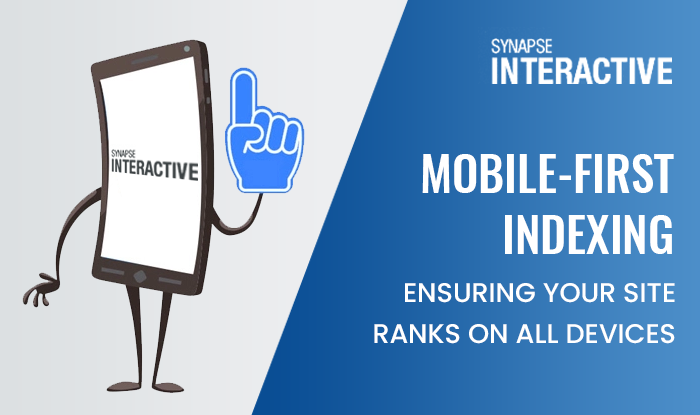
In today's digital age, the importance of mobile-first indexing cannot be overstated. With more users accessing the internet via mobile devices than ever before, Google has shifted its indexing strategy to prioritize mobile versions of websites. This article delves into the nuances of mobile-first indexing and offers practical tips on ensuring your site ranks well on all devices.
What is Mobile-First Indexing?
Mobile-first indexing means that Google predominantly uses the mobile version of the content for indexing and ranking. Previously, the desktop version was considered the primary version. This shift reflects the growing trend of mobile internet usage.
The Evolution of Search Behavior
The way people search for information online has evolved. With smartphones becoming ubiquitous, more searches are conducted on mobile devices. Recognizing this, Google has adapted its indexing practices to ensure users get the best possible experience.
Why Mobile-First Indexing Matters
Mobile-first indexing matters because it affects how Google views and ranks your website. If your site isn’t optimized for mobile, it could hurt your search engine rankings, which in turn affects your visibility and traffic.
Preparing Your Website for Mobile-First Indexing
Responsive Web Design
Responsive web design ensures your site adapts to different screen sizes, providing a seamless user experience whether on a desktop, tablet, or smartphone.
Prioritizing Speed
Mobile users expect fast-loading pages. Optimizing images, leveraging browser caching, and minimizing JavaScript are critical steps to improve load times.
Mobile Usability
Ensure that buttons and links are easy to click, text is readable without zooming, and the overall navigation is user-friendly.
Key Elements to Focus On
Content Parity
Content parity means that the content on your mobile site should match the desktop version. Ensure all text, images, and videos are accessible on mobile.
Structured Data
Structured data helps search engines understand the content on your site. Make sure your structured data is present and correctly implemented on the mobile version.
Meta Data Consistency
Your titles, meta descriptions, and header tags should be consistent across both mobile and desktop versions. This ensures that Google accurately indexes your content.
Common Mistakes to Avoid
Different URLs for Mobile and Desktop
Using different URLs for mobile and desktop versions can confuse search engines. Stick to a single URL for each piece of content.
Blocking Resources
Avoid blocking CSS, JavaScript, or images on your mobile site. Google needs access to these elements to understand your site’s structure and content.
Ignoring User Experience
A poor user experience on mobile can lead to high bounce rates. Ensure your site is easy to navigate, and that users can find what they need quickly.
Tools to Help with Mobile Optimization
Google’s Mobile-Friendly Test
This tool analyzes your site and provides insights into its mobile usability. It highlights issues and offers suggestions for improvement.
PageSpeed Insights
PageSpeed Insights evaluates your site’s performance on both mobile and desktop, providing actionable tips to enhance speed and user experience.
Search Console Mobile Usability Report
This report in Google Search Console identifies usability issues on your mobile site, helping you address problems that could affect your rankings.
Benefits of Mobile-First Indexing
Improved User Experience
A mobile-optimized site offers a better user experience, leading to higher engagement and lower bounce rates.
Enhanced SEO Performance
By aligning with Google’s mobile-first indexing, you enhance your site’s SEO performance, potentially boosting your rankings.
Increased Reach
With more people accessing the web via mobile devices, a mobile-optimized site can reach a broader audience.
Case Studies of Successful Mobile-First Indexing
Company A: Boosting Traffic through Mobile Optimization
Company A revamped its website to be mobile-friendly, resulting in a 30% increase in organic traffic within six months.
Company B: Enhancing User Experience
Company B focused on improving mobile usability, leading to a significant reduction in bounce rates and higher conversion rates.
Company C: Leveraging Structured Data
By implementing structured data on its mobile site, Company C saw improved visibility in search results and a higher click-through rate.
Future Trends in Mobile-First Indexing
Voice Search
With the rise of voice search, optimizing your mobile site for voice queries will become increasingly important.
Progressive Web Apps (PWAs)
PWAs offer a native app-like experience on mobile devices, providing fast load times and offline functionality.
AI and Machine Learning
AI and machine learning will play a bigger role in how search engines index and rank mobile content, emphasizing the need for advanced optimization techniques.
Conclusion
Mobile-first indexing is a crucial aspect of modern SEO. By focusing on mobile usability, content parity, and technical optimization, you can ensure your site ranks well across all devices. Embrace these practices to stay ahead in the competitive digital landscape.
FAQs
1. What is mobile-first indexing ?
Mobile-first indexing means Google predominantly uses the mobile version of your website for indexing and ranking.
2. How can I check if my site is mobile-friendly ?
You can use Google's Mobile-Friendly Test and the Mobile Usability report in Google Search Console to check your site's mobile friendliness.
3. Why is mobile site speed important ?
Mobile site speed is crucial because slow-loading pages can lead to higher bounce rates and lower user engagement, affecting your rankings.
4. What is content parity ?
Content parity ensures that the content on your mobile site matches the desktop version, providing a consistent user experience.
5. Can I use different URLs for mobile and desktop versions ?
It's best to use a single URL for each piece of content to avoid confusing search engines and ensure proper indexing.


 1178 Broadway, 3rd Floor #1346,
1178 Broadway, 3rd Floor #1346, SDF B-10, NSEZ, Sector
81,
SDF B-10, NSEZ, Sector
81,

